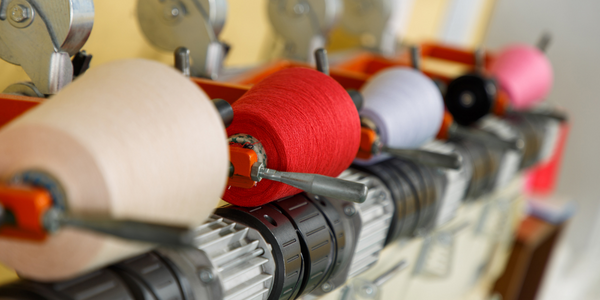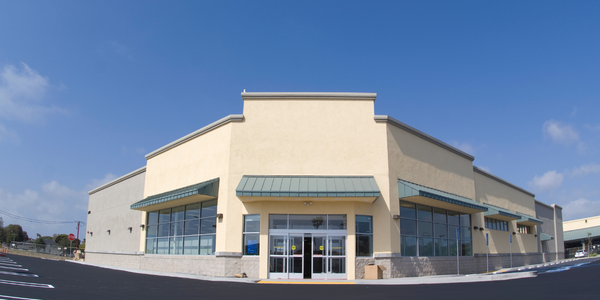Customer Company Size
Mid-size Company
Region
- America
Country
- United States
Product
- Acumatica Financial Management Suite
- Intercompany Accounting module
- Acumatica Studio
Tech Stack
- .NET
- API
Implementation Scale
- Enterprise-wide Deployment
Impact Metrics
- Cost Savings
- Productivity Improvements
Technology Category
- Functional Applications - Enterprise Resource Planning Systems (ERP)
Applicable Industries
- Apparel
Applicable Functions
- Procurement
- Business Operation
Use Cases
- Inventory Management
- Supply Chain Visibility
Services
- System Integration
About The Customer
S&S Activewear is a wholesale distributor of activewear apparel and accessories. The company is an industry leader in the category of imprintable apparel and accessories, which can be custom-printed on for corporate branding, uniforms, and other uses. S&S Activewear has a presence in Chicago and also operates in Los Angeles under the Americana Sportswear brand name. It employs 350 staff across both offices. The company had developed its own inventory management system to manage the array of colors and sizes for every single style of clothing.
The Challenge
S&S Activewear, a wholesale distributor of activewear apparel and accessories, was using a Telnet green-screen system to organize its business information. As the company's needs became more sophisticated and better technology became available, it decided to look for a more advanced system in a .NET environment. The company hired a consultant to evaluate various ERP options in the market, some of which cost several million dollars. However, none of the options, including big-name players like Microsoft Dynamics and BlueCherry, were found to be suitable. The company had developed its own inventory management system to manage the array of colors and sizes for every single style of clothing, and many other ERP systems were not equipped to do this.
The Solution
A recommendation from a trusted colleague led S&S Activewear to Acumatica. The company was impressed with Acumatica's API functionality and import tools, which were key factors in their selection process. S&S Activewear deployed the Acumatica Financial Management Suite and Intercompany Accounting module in mid-2012. They found Acumatica to be affordably priced and appreciated the fact that it was not licensed per-user, and included a broad set of functionality at an affordable price. The company also liked that there was flexibility in how Acumatica is delivered, whether it be SaaS or on-premise hosting. Looking ahead, the company intends to continue streamlining its processes by integrating its own developed applications into the core Acumatica system using Acumatica Studio.
Operational Impact
Quantitative Benefit

Case Study missing?
Start adding your own!
Register with your work email and create a new case study profile for your business.
Related Case Studies.

Case Study
Fire Alarm System and Remote Monitoring Sytem
Fire alarm systems are essential in providing an early warning in the event of fire. They help to save lives and protect property whilst also fulfilling the needs of insurance companies and government departments.Fire alarm systems typically consist of several inter-linked components, such as smoke detectors, heat detector, carbon monoxide, manual call points, sounders, alarm and buzzer. The fire alarm system should give immediate information in order to prevent the fire spread and protect live and property.To get maximum protection a shoe manufacturer in Indonesia opted for a new fire alarm system to monitor 13 production sites spread over 160 hectars. Although the company had an existing fire alarm system, it could not be monitored remotely.It was essential that the new system would be able to be monitored from a central control room. It needed to be able to connect to the existing smoke detector and manual call point. Information should be easily collected and passed on to the Supervisory Control and Data Acquisition (SCADA) system. Furthermore, the system should have several features such as alarm management, auto reporting, being connected to many client computers without additional cost, and run 24/7 without fails. The company also needed a system which could be implemented without changing the architecture of the existing fire alarm system.

Case Study
IoT Applications and Upgrades in Textile Plant
At any given time, the textile company’s manufacturing facility has up to 2,000 textile carts in use. These carts are pushed from room to room, carrying materials or semi-finished products. Previously, a paper with a hand-written description was attached to each cart. This traditional method of processing made product tracking extremely difficult. Additionally, making sure that every cart of materials or semi-finished products went to its correct processing work station was also a problem. Therefore, the company desired an intelligent solution for tracking assets at their factories. They also wanted a solution that would help them collect process data so they could improve their manufacturing efficiency.

Case Study
Retailer Uses RFID Scanner to Improve Efficiency
Patrizia Pepe wished to improve the logistics of their warehouse: accepting incoming goods from their production sites, movement of items throughout
the warehouse, and packaging of goods for distribution to the retail locations. They initially tried to use barcodes for this function. Because barcodes must be individually scanned within a line-of-sight, the acceptance of goods coming into the warehouse was too time consuming. Working with the University of Florence, Patrizia Pepe instituted a five-month pilot project beginning in August of 2009 to test the validity of an RFID solution. The pilot involved tagging of about 60,000 items for the second seasonal collection, and convinced the company to move forward with tagging all items.

Case Study
Monitoring and Controlling Automatic Mixing and Dispensing Machines
As technology advances, textile manufacturing has been transformed from a labor-intensive to a partially or fully automated industry. Automation is significant in all segments of textile production - from spinning to printing, and textile machinery manufacturers are constantly searching for new technologies and automation processes will increase the productivity of their machines. The color paste mixing and dispensing machine is an essential part of the printing and dyeing process. With the advantage of automatically computerized controls and database management, the system can significantly improve its dispensing precision, working efficiency and production quality as well as reducing material consumption.









